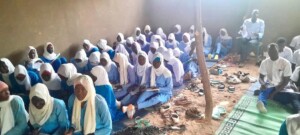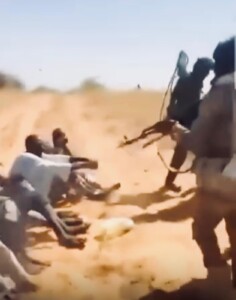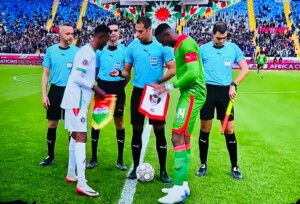‘Sudan govt. used chemical weapons in Darfur’: Amnesty Int.
Evidence strongly suggests the repeated use of chemical weapons against civilians, including very young children, in Darfur’s Jebel Marra, Amnesty International (AI) says in a new report on Thursday.
Evidence strongly suggests the repeated use of chemical weapons against civilians, including very young children, in Darfur’s Jebel Marra, Amnesty International (AI) says in a new report on Thursday.
The report Scorched Earth, Poisoned Air features satellite images, survivor testimonies, and photos to confirm the occurrence of “war crimes” in Sudan’s war-torn western region.
“It is time to expose the harrowing human rights violations taking place in Jebel Marra to a world that has so far ignored them,” AI states.
Using satellite imagery, more than 200 in-depth interviews with survivors and expert analysis of dozens of appalling images showing babies and young children with terrible injuries, the investigation indicates that at least 30 likely chemical attacks have taken place in the Jebel Marra area since January 2016. The most recent was on 9 September.
Based on testimonies from caregivers and survivors, the human rights watchdog estimates that between 200 and 250 people may have died as a result of exposure to the chemical weapons agents, with many –or most– being children.
“The scale and brutality of these attacks is hard to put into words. The images and videos we have seen in the course of our research are truly shocking.”
Hundreds more survived attacks but in the hours and days after exposure to the chemicals developed symptoms including severe gastrointestinal conditions involving bloody vomiting and diarrhoea; blistering and rashes on skin which reportedly hardened, changed colour and fell off; eye problems including complete loss of vision; and respiratory problems which were reported to be the most common cause of death, the report reads.
Jebel Marra in Central Darfur is cut off from the outside world – no journalists, humanitarian actors or Unamid peacekeepers have been allowed access since the Sudanese government re-launched an offensive on rebel strongholds in the region in January.
AI had to conduct its research remotely – corroborating dozens of interviews with satellite images, and consultations with two chemical-weapons experts.
One of the experts said that, when taken together, the eyewitnesses' accounts, photos, and symptom analysis offer enough information to make him "very certain" chemical agents "of some sort" were used.
“The scale and brutality of these attacks is hard to put into words. The images and videos we have seen in the course of our research are truly shocking; in one a young child is screaming with pain before dying; many photos show young children covered in lesions and blisters. Some were unable to breathe and vomiting blood,” said Tirana Hassan, AI’s Director of Crisis Research.
'Then his skin started falling off'
One woman in her twenties was injured by shrapnel when a bomb which emitted a toxic cloud of smoke fell inside her village. She and her baby became sick and six months later they are still suffering from the effects.
“His urine changed to green; it is now yellow. His eyes turned green; now they are a bit better.”
“When [the bomb] landed there was some flames and then dark smoke…Immediately it caused vomiting and dizzying…My skin is not normal. I still have headaches, even after I took the medicine…The baby is not recovering…he is swollen…he has blisters and wounds…they said he would get better…but it is not working.”
“My [three-year-old] son was left behind when everyone ran away,” a man from Gamara village in Jebel Marra testified to AI. The village was attacked in January this year.
“The bomb landed near to him. He was not injured but since the day of the attack he started coughing and had difficulty breathing, then he started vomiting and having diarrhoea. Then his skin started falling off. [..]
“His urine changed to green; it is now yellow. His eyes turned green; now they are a bit better. He lost a lot of weight – he became almost like a skeleton. [Nine months later] he has not recovered.”
Over 170 villages destroyed
Based on satellite imagery, AI confirms that 171 villages have been destroyed or damaged during the eight months since the government started its offensive against sites of the Sudan Liberation Movement led by Abdelwahid El Nur (SLM-AW).
The overwhelming majority of these villages had no formal armed opposition presence at the time they were attacked, AI states.
‘Allegations’
Sudan’s Ambassador to the UN Omar Dahab Fadul Mohamed responded in a statement on Thursday “that the allegations of use of chemical weapons by the Sudanese Armed Forces in Darfur are fabricated”.
“The ultimate objective of such wild accusation, is to steer confusion in the on-going processes aimed at deepening peace and stability and enhancing economic development and social cohesion in Sudan,” he was quoted as saying.
Sudan ratified the international Chemical Weapons Convention in 1999.











 and then
and then